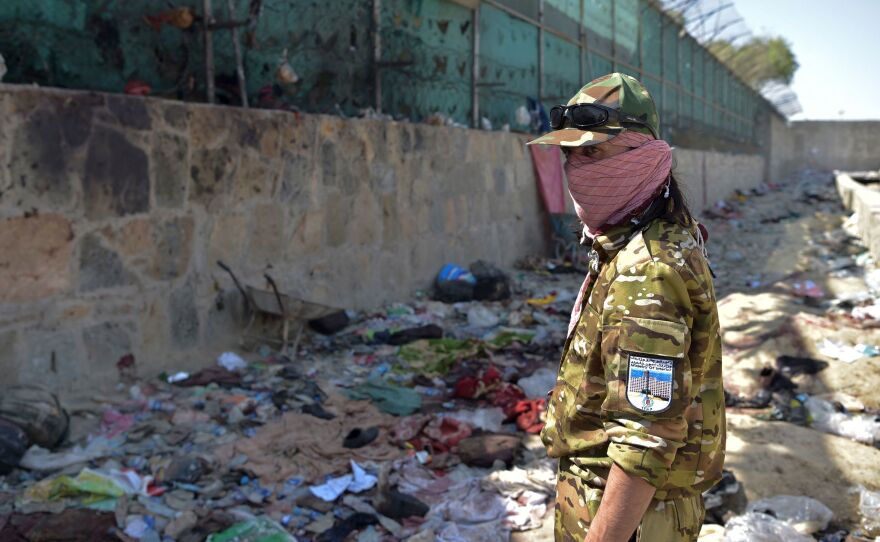Updated August 27, 2021 at 1:29 PM ET
The massive evacuation effort in Afghanistan continues after Thursday's attack at the Kabul airport that left dozens dead, including 13 U.S. troops. Two officials, who spoke on the condition of anonymity, told The Associated Press on Friday that 169 Afghans had died, but a final count might take more time.
Here are the latest details:
The White House says the next few days will be the "most dangerous"
The White House told reporters that President Biden's national security team advised him Friday that another attack in Kabul is likely.
"The next few days of this mission will be the most dangerous period to date," press secretary Jen Psaki said in a statement about the briefing Biden received.
Officials are "taking maximum-force protection measures at the Kabul airport," she added.
In a meeting in the White House Situation Room, commanders also updated Biden and Vice President Harris on plans to develop ISIS-K targets, Psaki added. The U.S. is blaming ISIS-K, or Islamic State Khorasan, for Thursday's attack.
There was one suicide bomber, not two, officials say
Maj. Gen. Hank Taylor said during a Pentagon briefing Friday that there was one suicide bomber in Thursday's attack in Kabul. There was not a second bomber at the nearby Baron Hotel, as the Pentagon previously said.
Two military flights have arrived at Ramstein Air Base in Germany with the Americans wounded in the attack.
Tension rises after fatal attack
Thursday was the deadliest day for American military forces in Afghanistan since 2011, U.S. officials said.
They also warned that more attacks on the Kabul airport were possible.
Gen. Frank McKenzie, head of U.S. Central Command, said American forces have to be physically close to hopeful evacuees to ensure they aren't carrying any weapons, the AP reported.
"Somebody has actually got to watch someone else in the eyes and decide that they're ready to come in," McKenzie said.
The Taliban had set up a makeshift barrier a third of a mile from the airport Friday morning, the AP said, to keep crowds further away from the gates.
Evacuations continue despite the threats
The crowds at the airport hoping to board a flight out of the country "appeared as large as ever" Friday morning, according to the AP.
People continued to amass at the perimeter around the Kabul airport despite the ongoing threat posed by ISIS-K, the Islamic State group's Afghanistan affiliate, Charlotte Bellis, a journalist with Al-Jazeera, told NPR's Morning Edition.
"Those that are around the perimeter say, 'We know there could be attacks today also but still come because it's a risk we're willing to take,' " she said.
Bellis also visited a Kabul hospital Friday morning, reporting that the scene was "heartbreaking" and that people were in "shock" after the attack.
The White House said about 12,500 people were evacuated from Kabul in the 24 hours ending at 3 a.m. ET Friday, bringing the total number evacuated from Afghanistan to 111,000, including 5,100 US. citizens.
Taylor said the military will keep processing those with proper credentials — U.S. citizens, green card holders and those with Afghan special immigrant visas. The U.S. will keep evacuating them "until the very end," he said.
This is a developing story. Some things reported by the media will later turn out to be wrong. We will focus on reports from officials and other authorities, credible news outlets and reporters who are at the scene. We will update as the situation develops.
Copyright 2021 NPR. To see more, visit https://www.npr.org.






